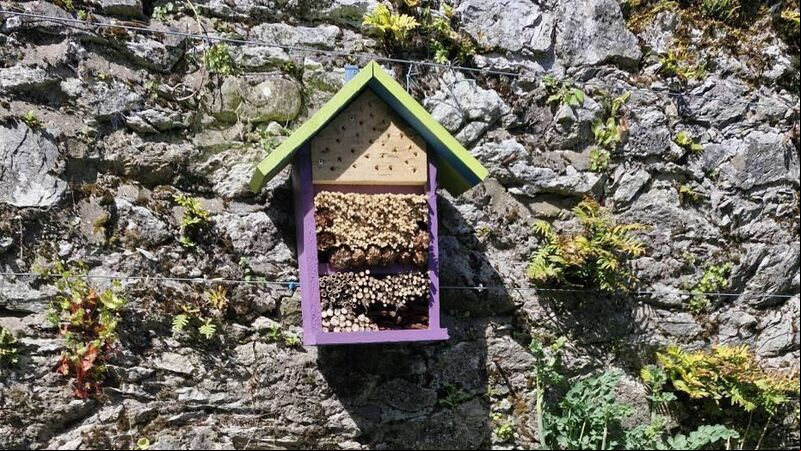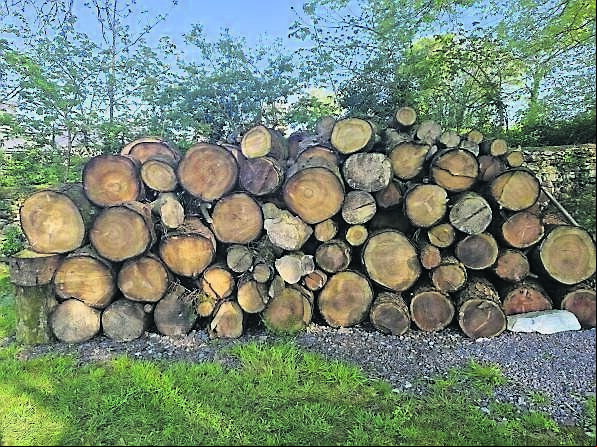In the garden: How to create habitats within your garden

A colourful bug hotel is a great way to help out insects, and looks great too hanging on the bigger bug hotel that is the stone wall behind!
No Mow May is upon us, and there is an opportunity to put the lawnmower aside and simply watch the grass grow and whatever else pops up in between.

To maintain the width of the dead hedge, use wooden posts in pairs at intervals of 1-2 metres. These can be used to stack the woody material along the length required.

Creating a pond is one of the most rewarding and nature friendly elements for the garden. It brings a myriad of additional aquatic life with it, from frogs and newts to dragonflies and damselflies, and is teeming with life throughout the year.







 App?
App?


